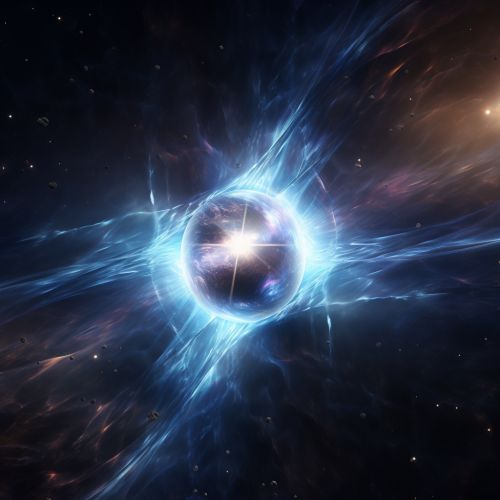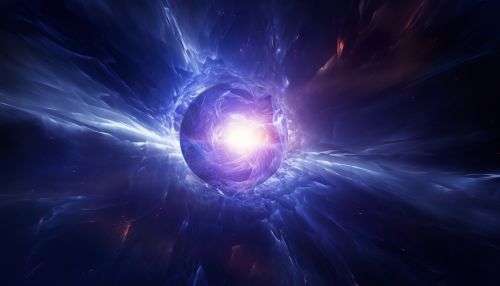Neutron Stars and Pulsars
Introduction
Neutron stars are the remnants of massive stars that have undergone a catastrophic supernova explosion. At the end of their lives, these stars have exhausted their nuclear fuel and their cores collapse under the force of gravity, resulting in a supernova. The core that remains is incredibly dense, with a mass of up to three times that of the Sun, but only about 20 kilometers in diameter. This density gives rise to unique physical properties, such as a strong gravitational field and a high rotation speed.


Formation
The formation of a neutron star begins with a star of at least eight solar masses in the main sequence stage of stellar evolution. As the star exhausts its nuclear fuel, it begins to collapse under its own gravity, leading to a period of instability and eventually a supernova explosion. The core of the star, composed mostly of iron, is left behind. This core is under such immense pressure that the electrons and protons are forced together to form neutrons, hence the name "neutron star".
Physical Properties
Neutron stars are incredibly dense, with a teaspoon of neutron star material weighing around a billion tons. The gravity on the surface of a neutron star is about 2 billion times stronger than on Earth. This extreme gravity causes the star to be very smooth, with any mountains being only a few millimeters high.
The intense gravitational field also causes the star to rotate very quickly. Some neutron stars can spin several hundred times per second. This rapid rotation can cause the star to emit beams of radiation from its magnetic poles. When these beams are pointed towards Earth, we can detect them as pulses of radiation, leading to the name "pulsar".
Pulsars
Pulsars are a type of neutron star that emit beams of radiation from their magnetic poles. These beams are caused by the rapid rotation of the star and the intense magnetic field. The radiation is usually in the form of X-rays or radio waves.
The first pulsar was discovered in 1967 by Jocelyn Bell Burnell and her supervisor Antony Hewish. The regularity of the pulses led them to initially consider the possibility that they were signals from an extraterrestrial civilization, but they soon realized they were dealing with a new type of star.
Pulsars are incredibly precise timekeepers. The regularity of their pulses is comparable to atomic clocks. This has led to their use in tests of general relativity and the detection of gravitational waves.
Types of Pulsars
There are several different types of pulsars, classified by the type of radiation they emit and their age. The most common type is the radio pulsar, which emits primarily in the radio wave part of the spectrum. There are also X-ray and gamma-ray pulsars, which are usually associated with supernova remnants or binary systems.
Millisecond pulsars are a type of radio pulsar that spin very rapidly, up to several hundred times per second. These are thought to have been spun up by accreting matter from a binary companion.
Magnetars are a type of neutron star with an extremely powerful magnetic field, up to a thousand times stronger than a typical neutron star. These stars are associated with intense bursts of X-rays and gamma rays.
Observation and Discovery
Neutron stars and pulsars are observed using large radio and X-ray telescopes. The first pulsar was discovered using a radio telescope, but modern observatories like the Chandra X-ray Observatory and the Fermi Gamma-ray Space Telescope have discovered many more.
The discovery of pulsars and their precise timing has provided a valuable test of Einstein's theory of general relativity. Pulsars in binary systems have been used to confirm the existence of gravitational waves, a key prediction of general relativity.
